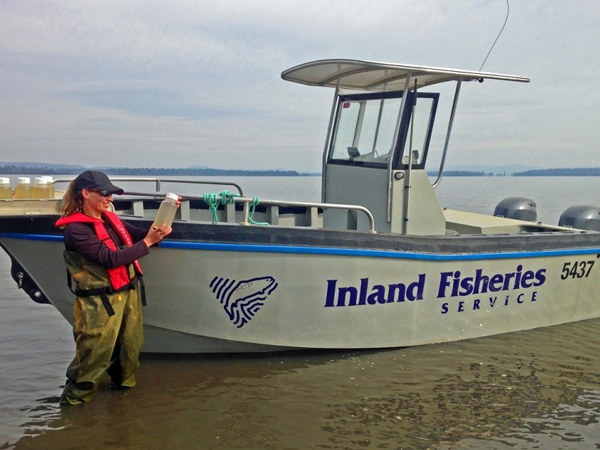Environmental DNA helping contain and manage pest fish
By Invasive Animals CRC
Environmental DNA or eDNA for short is a specialised technique which can detect small amounts of DNA that a fish may release into their environment, such as skin cells or faeces, avoiding the need to physically capture fish. A one litre water sample is all researchers need to be able to detect the presence of invasive pest fish in our river systems, resulting in improved and tailored management outcomes for local catchment authorities.

Dr Elise Furlan collecting water samples as part of the environmental DNA survey in Lake Sorell, Tasmania. Photo: Jonah Yick.
Dr Elise Furlan, a Postdoctoral Research Fellow from the University of Canberra funded through the Invasive Animals Cooperative Research Centre has been working on European carp eDNA detection in Tasmanian waterways. Working in collaboration with the Tasmanian Carp Management Program, she analysed samples from a known, low-density carp population in Lake Sorell and from the site of a recently eradicated carp population in Lake Crescent.
The work has been extremely valuable to help understand how many water samples must be taken before a conclusion can be made that carp are present or absent in a waterway. Both lakes were ideal for these trials due to their large sizes and isolation. The low density of carp in a comparatively large water body is also a unique situation, and is good test of eDNA sensitivity. This technique could be applied to confirm the presence of carp and other species in suspected waters while populations are small, as well as being a complementary technique for confirming the eradication of species from waters.
For more information visit www.pestsmart.org.au



